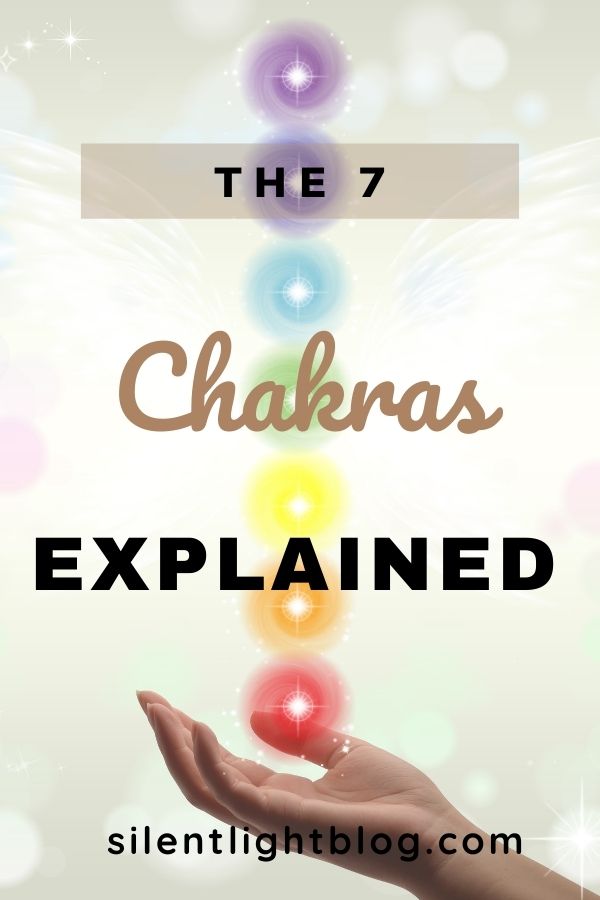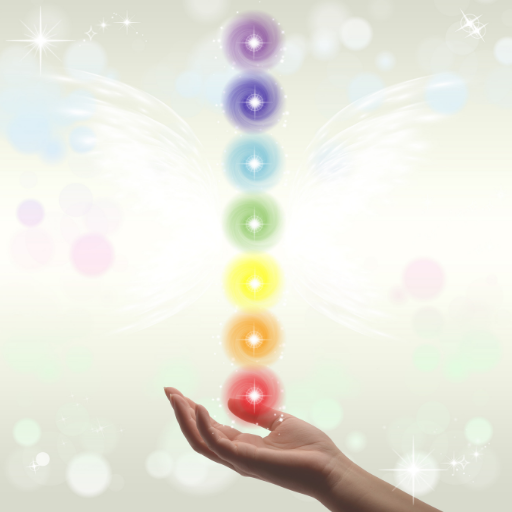The 7 Chakras Explained

When it comes to the human body, it is important to understand not only the physical aspect of the human body but the energetic aspect of the human body as well.
The human body energetically consists of cells that vibrate with energy which is drawn from a universal energy field according to many types of healers etc.
The chakras are what draw the energy from within the body which makes up the energy fields and/or the auras around the body.
There are many mysteries in regards to who we are in the hidden aspects of the human body. There are many discoveries that prove that we are more than our physical bodies according to many scientists.
Because of the misconception of chakras, it has been left out of conventional medicine practices along with other useful holistic practices and techniques, etc.
This may be why previously it was not as well known as a common and practical solution to health and healing.
Some people tend to disregard issues or practices such as chakras due to lack of knowledge etc.
What Are Chakras?
The important thing is to gain an understanding of what chakras are.
Chakras are energy centers within the human body. It is also a Sanskrit word that means a wheel or disk spinning in motion which ultimately forms into a vortex.
The energy from the chakras is filtered and dispersed throughout our bodies.
A lot of people may have had the wrong perception of chakras and may have associated them with evil etc. which is nothing like that and is totally misunderstood.
These energy centers and the knowledge around them are considered to be ancient and lost throughout the years.
More and more people are starting to wake up to the true knowledge and the benefits of the chakras.
There are many chakras but there are 7 main chakras in the physical body that we will focus on in this blog post.
The 7 main chakras consist from the top or crown of your head to the other end of your body.
Keep in mind no matter if you make the chakras the focus or not within your body, they are there regardless and are constantly interacting with one another.
The chakras can be performed to their highest abilities if it is in balance. If there are issues mentally and physically in your life, it could be one of the direct issues of one, some, or all of your chakras being out of balance.
Because we are energetic beings, when energy is not flowing correctly throughout our bodies, it can have a direct impact also on our state of mind and actions, etc.
If it is determined that there are issues with your chakras being out of balance, the great news is that there are many different and simple techniques, etc. that can be used to help bring your chakras into balance.
For example, there are many different types of meditations and exercises that can be used as healing techniques to help clear or heal chakras.
These techniques can also help eliminate any blockages or any type of imbalances within the chakras. The goal is to enable your chakras to have a natural flow of energy moving throughout your body.
Ultimately, when the energy is moving at its optimum level and the chakras are unblocked, this will enable a person to be in a great state physically, mentally, and spiritually.
Root Chakra
The root chakra is considered to be the first chakra also known as the base chakra. This chakra is located at the base of the spine and the color of this chakra is red. The symbol for this chakra is represented by the lotus flower with four petals. The Sanskrit name for this chakra is called Muladhara.
The root chakra acts as the root in the body and its function is to aid us with the connection to the earth. This chakra helps us to connect with our basic and fundamental needs for survival. This also helps us feel stability when it comes to shelter, our health, and our safety and well-being.
When this chakra is out of balance, you may tend to not be connected with nature. This chakra out of balance may make you feel ungrounded and not feel a level of stability in your life. This feeling can ultimately lead you to not taking care of yourself in a healthy way and neglect your basic needs and security etc.
In contrast, if the root chakra is considered to be over-stimulated, then a person may be too attached to the physical things in this world and material wealth, etc.
A person may also tend to not focus on nature due to possible fear of disconnecting with material things etc.
Some people with an overactive root chakra may hold on to the wealth and not enjoy the simple things in this world such as nature and may lose out on the priceless things due to fear of losing wealth and material things etc.
Sacral Chakra
The second chakra is what is considered to be the sacral chakra also known as the belly or spleen chakra. The sacral chakra is located in the lower abdomen area and the color of it is orange. The Sanskrit name for this chakra is called Svadhisthana. The symbol that represents this chakra is a lotus of 6 petals.
This chakra represents change and also includes all levels of creativity including childbirth.
The sacral chakra is also the source of our sexuality.
When this chakra is operating properly, a person will experience vitality and passionate life.
This energy focuses on the pleasures in life and the things that we desire as well as our creativity. It also allows you to see the good and beauty in people and things in this world. It also allows us to truly appreciate our true talents and passions etc. from our creativity etc.
When a person’s sacral chakra is overactive, then a person may focus too much on satisfying their desires in an excessive way.
In contrast, if our sacral chakra is blocked or is out of balance, a person may tend to avoid pleasure or not explore their desires, creativities, nor their passions, etc.
Solar Plexus
The 3rd chakra is the solar plexus known as the naval chakra. This chakra’s color is yellow and the Sanskrit name is called Manipura. The symbol for this chakra is a lotus of 10 petals.
This chakra focuses on your personal power and will. With a healthy solar plexus, a person may have a strong level of confidence, self-esteem, and a sense of belonging in this world.
This chakra is also considered to be the seat of our willpower. If you have strong willpower with this chakra, you have the strong ability to stand your ground or your convictions and the willpower to believe and/or do things in your life, etc.
When this chakra is out of balance, a person can be considered to be very sensitive when it comes to the reaction of others, feelings of indifference when dealing with forms of rejection, and tend to criticize themselves if they do not feel accepted or receive positive feedback from others.
This type of behavior is when a person constantly reacts to their “inner critic” from within which can lead to little to no self-confidence, and feelings of feeling unworthy and unloved.
With this chakra being balanced, a person can accept their responsibilities and has confidence. A person would also have the ability to act in a way from a place of power without the approval of others which is a sign of healthy self-esteem.
Heart Chakra
The fourth chakra is the heart chakra and it is located in the middle of the chest and the color is primarily green and can also be referred to as pink. The Sanskrit name for this chakra is called Anahata and the symbol is the lotus flower with 12 petals.
The heart chakra is focused on unconditional love. The heart chakra deals with empathy and love for others. This is also the link between our intellectual and spiritual aspects of ourselves.
Operating in unconditional love is considered to be a state of being. With the connection of the solar plexus and the heart chakra, it can operate cohesively together to connect our love with others. Operating in unconditional love can lead you to a path of inner peace and well-being.
When the heart chakra is out of balance, it can lead a person to give too much of themselves, etc without anything in return. A person out of balance in this area of not having empathy can lead them in return to not show compassion etc. towards others.
Throat Chakra
The 5th chakra is the throat chakra located at the throat. The color associated with the throat chakra is blue. The Sanskrit name is Visuddha and the symbol is a lotus with 16 petals.
The throat chakra is associated with communication and expression verbally and non verbally. This is also associated with telepathic abilities to pick up other people’s thoughts. This can be considered true due to everyone being connected energetically since we are all energy beings.
When a person has a healthy throat chakra, a person communicates to others in a respective, clear, and thoughtful way. A person also can express and articulate their needs and desires to others. A person also would have a healthy way of speaking the truth or their truth to others without it being offensive.
When this chakra is blocked or out of balance, a person may speak too much or become over-talkative and sometimes about nothing important or interesting at all to others.
A person with an overactive throat chakra can make others turn away from them as they may seem to be annoying to others.
In contrast, when a person has a blocked throat chakra, a person may have issues with communicating with others. A person with a blocked throat chakra may also give messages that tend to be confusing or unclear to others including nonverbal communication.
Third Eye Chakra
The 6th chakra is the 3rd eye chakra known as the brow chakra and is located at the center of the body above the eyebrows and the color is indigo. The Sanskrit name is Ajna and the symbol is a lotus with 2 petals.
This chakra is the representation of the integrations of the conscious and the unconscious. This is where our imagination and our inner sight reside.
When this chakra is fully developed, a person is aware of their inner intuition and perception.
If this chakra is overactive, a person may tend to be ungrounded, disoriented, or in la-la land or too spacey.
When this chakra is blocked, a person can be considered to be shallow-minded and stuck in their own ways of thinking.
They may also tend to not be open to seeing things from other people’s perspectives.
When this chakra is balanced, this intuition and perception that we receive on a more advanced level can be used to our advantage, especially with the use of our inner wisdom.
Since our minds are so powerful, we are able to visualize to help aid us with positive conclusions in our lives and those around us.
Crown Chakra
The 7th chakra is the crown chakra also known as the coronal chakra. It is located at the top of the head. The color of this chakra is violet and the Sanskrit name is called Sahasrara which means is a thousandfold in reference to its symbol. The symbol for this chakra is the lotus flower with 1,000 petals.
This chakra represents your insight, your inner knowing, and your self-realization.
This is considered to be our direct connection to the divine and the source of our spirituality. It also has a direct influence on nature and how we think.
This chakra is also where the energy enters the body which flows throughout our bodies and through all of the other chakras.
The more we develop in our spirituality, the more that we will develop a stronger level of the crown chakra.
This chakra when fully balanced represents a person’s highest level of consciousness which also validates
balancing all of the other chakras cohesively.
As part of the great awakening, many people are tuning in and developing their crown chakras with increased knowledge no matter if it is on a conscious or subconscious level.
The more that people wake up and strengthen their crown chakra, from an energetic perspective since we are all connected, this will in the long run help raise the collective consciousness on this planet.
As you can see, there is a strong and holistic connection with your chakras and your body and they can ultimately, if balanced, can help you achieve your well-being overall physically, mentally, and spiritually.

